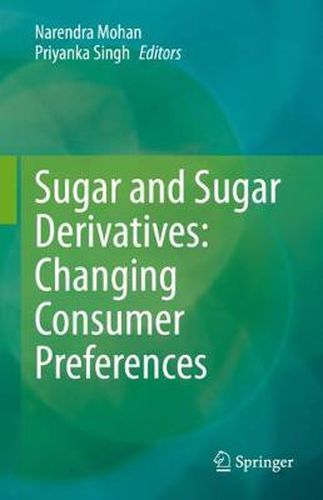Readings Newsletter
Become a Readings Member to make your shopping experience even easier.
Sign in or sign up for free!
You’re not far away from qualifying for FREE standard shipping within Australia
You’ve qualified for FREE standard shipping within Australia
The cart is loading…






This title is printed to order. This book may have been self-published. If so, we cannot guarantee the quality of the content. In the main most books will have gone through the editing process however some may not. We therefore suggest that you be aware of this before ordering this book. If in doubt check either the author or publisher’s details as we are unable to accept any returns unless they are faulty. Please contact us if you have any questions.
Sugarcane enjoys a prominent position among agro-industrial crops and is commercially grown in 115 tropical and subtropical countries around the world. However, fluctuations in sugar prices have forced the sugarcane industry worldwide to broaden its revenue base by moving from single-commodity manufacturing to a range of value-added products. Utilizing the by-products in an innovative manner to create value-added products is the new course of action for sugar-producing countries.
For many years sugarcane was regarded as a single-product crop, i.e., only useful for producing sugar. Its actual potential is now increasingly being recognised by the industry and there is a growing trend toward the manufacturing of allied products from sugarcane. Therefore, the focus is now on the establishment of sugar-agro-industry complexes, processing not just sugar but a range of other products.
This book provides a comprehensive overview of sugarcane not only as a source of sweetening agents but also for many other uses, including as a source of bio-energy. It also explores the trend of sugar consumption and suggests practices to curb the consumption of sugar products in order to tackle obesity and reduce public health costs. The book underscores the need to diversify sugarcane and highlights means of doing so, while also addressing various innovations and technologies being developed in connection with sugar, sugar derivatives, and sugar industry by-products for sustainable utilization in the sugar-agro industry. Accordingly, it offers a valuable resource for professionals and R&D units in the sugar industry, and for students of agronomy and related fields.
$9.00 standard shipping within Australia
FREE standard shipping within Australia for orders over $100.00
Express & International shipping calculated at checkout
This title is printed to order. This book may have been self-published. If so, we cannot guarantee the quality of the content. In the main most books will have gone through the editing process however some may not. We therefore suggest that you be aware of this before ordering this book. If in doubt check either the author or publisher’s details as we are unable to accept any returns unless they are faulty. Please contact us if you have any questions.
Sugarcane enjoys a prominent position among agro-industrial crops and is commercially grown in 115 tropical and subtropical countries around the world. However, fluctuations in sugar prices have forced the sugarcane industry worldwide to broaden its revenue base by moving from single-commodity manufacturing to a range of value-added products. Utilizing the by-products in an innovative manner to create value-added products is the new course of action for sugar-producing countries.
For many years sugarcane was regarded as a single-product crop, i.e., only useful for producing sugar. Its actual potential is now increasingly being recognised by the industry and there is a growing trend toward the manufacturing of allied products from sugarcane. Therefore, the focus is now on the establishment of sugar-agro-industry complexes, processing not just sugar but a range of other products.
This book provides a comprehensive overview of sugarcane not only as a source of sweetening agents but also for many other uses, including as a source of bio-energy. It also explores the trend of sugar consumption and suggests practices to curb the consumption of sugar products in order to tackle obesity and reduce public health costs. The book underscores the need to diversify sugarcane and highlights means of doing so, while also addressing various innovations and technologies being developed in connection with sugar, sugar derivatives, and sugar industry by-products for sustainable utilization in the sugar-agro industry. Accordingly, it offers a valuable resource for professionals and R&D units in the sugar industry, and for students of agronomy and related fields.